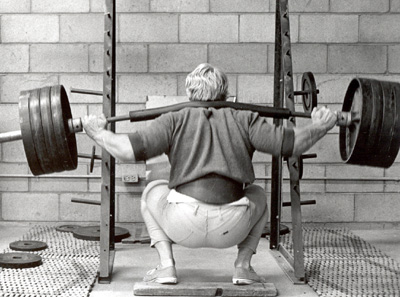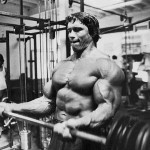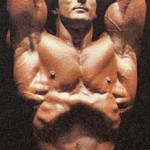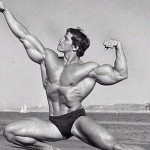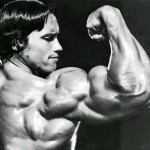In Aesthetically Pleasing, Chapter 1, we discussed the foundation of this entire volume of ongoing work. By defining aesthetics, and putting into perspective the quest for a universally praised physique, we are now ready to tackle one of the most devastating problems plaguing those attempting to achieve a great physique. Let’s begin by pointing out that to attain an aesthetically pleasing physique, an individual must have pretty ideal proportions. Those proportions visually echo your entire body’s musculature, and as a result, legs are an integral portion of the equation. Many people, however, are not interested in working out their legs. Their emphasis remains solely embedded within their upper body, and that’s where the problem arises.
After reading Chapter 1, it should be well known that the overall goal of reaching aesthetics is not an easy task, we can confirm this simply by looking at the people walking among us in our every day lives. The amount of people that lift is rather minimal, and the amount that have achieved aesthetics is a minimal portion of that minimality. However, last time I checked, you’re here because you’re in the pursuit of achieving the pinnacle of muscular perfection (or at least learning about it, in which case, understand for the sake of understanding), so how hard the task is is quite irrelevant. Powerful legs that are well built in proportion with your upper body resonate beauty, symbolize perfection, and allow you to enter the rare realm of aesthetics of those so very few (this sentence might seem…well, anyway, it won’t unless you haven’t read Chapter 1!).
It’s quite a shame when you see an individual with a great upper body, who looks like he’s on the right track, only to add legs into the equation and see misfortune. Now, take note here, when it comes to aesthetics, it does not have to mean the legs are small. Legs can be too big for the upper body as well, and since it’s quite hard to build legs that are muscularly too big without realizing (…yea, right), it often is the case that they are simply too fat. Even with a lowered body fat percentage and the muscle required to build a great upper body, the legs can dampen the situation because some people who don’t work them believe their legs are naturally on the bigger side, which is fine until they immerse themselves in the pursuit of aesthetics and have to catch up later because their leg size is a result of natural higher body fat and bone density (makes it appear thicker) as opposed to larger muscle size (which is also in the equation, but not to the extent imagined). Therefore, the leg disease can work both ways, if we’re dealing with aesthetics.
For those reading this article who have recently started lifting, or for those who have been lifting for a while (it’s never too late!), I’m going to explain something very important to you in regards to legs. Whether you wish to achieve aesthetics or not (I don’t see why you wouldn’t if you’re lifting, but hey, everyone lifts for different reasons right?), it’s important to work out legs not only so that they are in proportion with your upper body, but for the following:
1) Legs are half of your body – I’m sure this is common sense, but it’s rarely applied in the gym. Imagine working out your entire upper body in one day (for those that have never tried a Upper/Lower body split or Full Body Workouts), can you imagine the exhaustion? That’s how you should feel on leg day, if you do it. If you don’t feel exhausted, you have not taxed your legs hard enough and are wasting your time convincing yourself that you are working out legs so you don’t feel bad. For those who haven’t worked out their legs yet, think how ridiculous it seems to work out half of your body, while ignoring the entire other half. Sure, you don’t see guys flexing their quads on Men’s Health, but if you pay attention to the pictures of those showing you how to do exercises, you won’t find a guy with legs that look like they haven’t been worked.
2) Muscle burns calories just to maintain itself – perhaps you know this, perhaps you don’t. Now that you do for sure, it’s pretty simple to understand that the more muscle you have, the more calories you’re going to be burning per day. Might not seem like much if we look at it on a daily basis, but if we start accounting for weeks at a time, and looking at the total extra calories burned for doing nothing all day except maintaining that muscle, I’d say that’s a pretty good trade-off that gives you the benefit of helping you stay even more lean if your diet is in check. It’s half of your body’s muscle mass (if you do it right and train them equally), come on!
3) Leg workouts hit your core like nothing else – Wow, so you’ve finally finished exhausting your “obliques” with some side twists at the end of your chest workout, wphew…good for you. You realize that doesn’t compare to hitting Squats hard, right? Imagine doing even a set of body weight squats with proper form, your core has to work really hard just to keep you balance as you go up and down, do you think any of your epic ab exercises can come close? No. Now add some weight to the bar, go all the way down, and you’ll see how much your core is going to improve (core includes abs…just sayin’).
4) Leg strength is unmatched – you’ve watched Martial Arts movies, you’ve seen people getting kicked. Well this has nothing to do with it, we’re all for non-violence. The point is, you can do more with your legs in terms of power, than any upper body part, that’s for sure. If you’re really hitting legs hard and your strength is up, imagine how useful that is in every day life. Whether you need to carry something or pick it off the ground, or simply move something that is heavy enough to force you to stay in position by grounding your feet, nothing’s going to help you more than leg power. With strength comes size, so naturally they’ll be growing just as well as your upper body to keep you in proportion, if you do it right. The great thing is, you’ll be twice as strong as many others who are the same “size” as you (upper body…cause that’s what matters, right?). Probably more, since your legs (if all else is equal), are the strongest.
5) More mass on your legs means more mass overall – no, I’m not even referring to the obvious fact that if your legs grow in size that adds to your total lean body mass. I’m talking about the fact that so many upper body movements require leg drive that it’d be ridiculous to believe leg power doesn’t help with upper body strength. If you know how to properly use the Mind-Muscle-Connection to enhance training (now you will), you realize that you need to use it in each major lift, whether it’d be the bench press or any DB variety of it, shoulder press, and heavy variations of rows that require leg strength to keep you perfect balance (instead of broken form leading to weak results).
The reasons could go on, but it’s quite easy to see that besides the fact that nobody truly deep down wants to look top heavy, there’s many reasons why legs are important. Aesthetics are #1, however, and you can’t achieve them without proportional legs. Plus, legs that are in tune with your upper body make you look twice as good, strong, and powerful even if you’re not worried about aesthetics (sure, buddy…not at all). So do the right thing, don’t start late cause you’ll be behind, and keep legs in the equation. Perhaps you’re truly not attempting to reach the pinnacle of physique perfection, but you’re still trying to look pretty good, right? Trust me, no matter how good you might look upstairs, the ironic part about it will be the fact that your top heavy physique will result in your bottom weighing you down, visually. Good Luck!
Incoming search terms:
- aesthetic workout
- how to get aesthetic body

